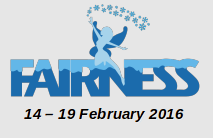Speaker
Iaroslav Panasenko
(Eberhard Karls Universität Tübingen(UT-PIT))
Description
The CBM experiment at FAIR will investigate the properties of nuclear matter at extreme conditions created in ultrarelativistic heavy-ion collisions. Its core detector — the Silicon Tracking System (STS) — will allow to reconstruct charged particle tracks with high precision and determine their momentum. The detection of rare probes requires the STS to be capable to measure at interaction rates of up to 10 MHz for Au-Au collisions. The track multiplicity will reach up to 700 within the detector aperture covering the polar angle 2.50 and 250. The high track density as well as stringent requirements for the momentum resolution (~1%) require a setup with high granularity and low material budget.
The STS will be constructed of about 1300 double-sided silicon microstrip sensors with total area of ~4 m^2 and has ~2.1 million readout channels. The microstrip sensors with 58 μm pitch and up to 124×62 mm^2 area will have pad size of 180×60 μm^2.
Commercially available probe stations have several drawbacks with respect to the application for STS silicon sensors. Therefore, a custom probe station is being developed at Tübingen University. One of the main requirements is a high accuracy and a repeatability better than 1 μm to allow an automatic successive positioning on all 1024 pads of a sensor, as well as a positioning range in accordance with the size of STS sensors. The probe station is controlled via dedicated software developed at Tübingen University. It allows automated alignment of a sensor under test, precise positioning, stepping through channels with measurements of several sensor parameters at each step. The construction of the probe station and first measurements will be presented.
Primary author
Iaroslav Panasenko
(Eberhard Karls Universität Tübingen(UT-PIT))
Co-authors
Dr
Anton Lymanets
(Tuebingen University)
Hans Rudolf Schmidt
(Eberhard Karls Universität Tübingen(UT-PIT))

